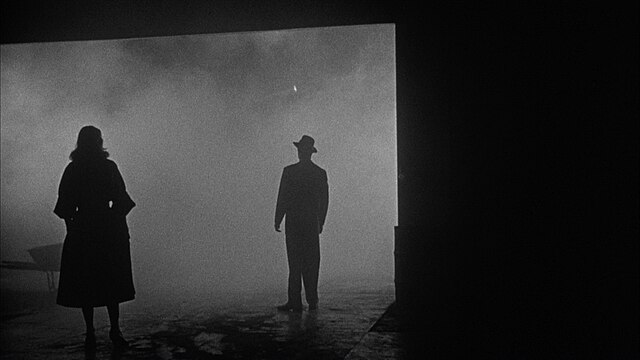Strangers on a Train (film)
Strangers on a Train is a 1951 American psychological thriller film noir produced and directed by Alfred Hitchcock, and based on the 1950 novel Strangers on a Train by Patricia Highsmith. It was shot in late 1950, and released by Warner Bros. on June 30, 1951, starring Farley Granger, Ruth Roman, and Robert Walker.
Poster by Bill Gold
In one of his trademark cameos, Hitchcock boards the train in Metcalf after Farley Granger's character exits.
Film noir is a cinematic term used primarily to describe stylized Hollywood crime dramas, particularly those that emphasize cynical attitudes and motivations. The 1940s and 1950s are generally regarded as the "classic period" of American film noir. Film noir of this era is associated with a low-key, black-and-white visual style that has roots in German Expressionist cinematography. Many of the prototypical stories and attitudes expressed in classic noir derive from the hardboiled school of crime fiction that emerged in the United States during the Great Depression.
Two silhouetted figures in The Big Combo (1955). The film's cinematographer, John Alton, is sometimes credited as the creator of many of film noir's stylized images.
The October 1934 issue of Black Mask featured the first appearance of the detective character whom Raymond Chandler developed into the famous Philip Marlowe.
Out of the Past (1947) directed by Jacques Tourneur, features many of the genre's hallmarks: a cynical private detective as the protagonist, a femme fatale, multiple flashbacks with voiceover narration, dramatically shadowed photography, and a fatalistic mood leavened with provocative banter. Pictured are noir icons Robert Mitchum and Jane Greer.
A scene from In a Lonely Place (1950), directed by Nicholas Ray and based on a novel by noir fiction writer Dorothy B. Hughes. Two of noir's defining actors, Gloria Grahame and Humphrey Bogart, portray star-crossed lovers in the film.






